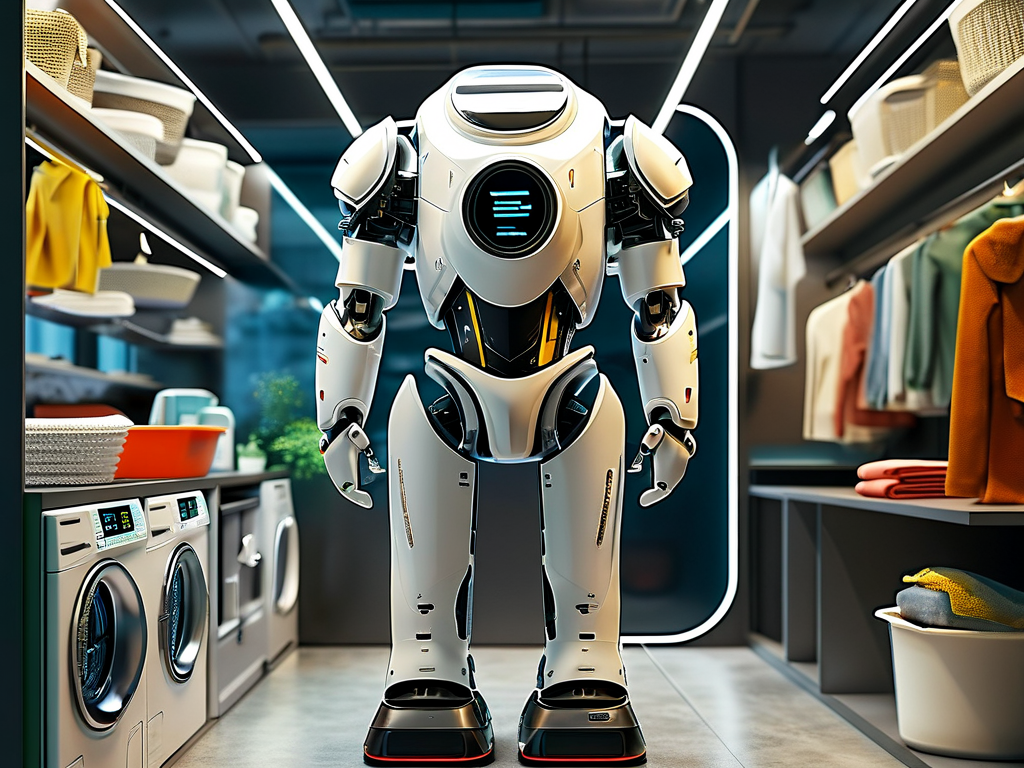The evolution of laundry technology has entered a transformative phase with the integration of robotics. Modern robotic laundry systems combine advanced mechanics, artificial intelligence, and sensor-based adaptability to redefine how fabrics are cleaned. This article explores the underlying principles driving these innovations and their implications for commercial and residential applications.
Hardware Architecture
At the heart of robotic laundry technology lies a sophisticated hardware framework. Multi-axis robotic arms, equipped with pressure-sensitive grippers, handle garments with precision to avoid damage. These arms operate within modular washing chambers featuring customizable compartments for sorting items by fabric type, color, or soil level. High-torque motors enable dynamic water agitation patterns, while microfluidic pumps regulate detergent dispensing down to milliliter accuracy.
A critical component is the sensor array. Hyperspectral imaging scanners analyze fabric composition in real time, detecting materials like silk or wool that require specialized care. Embedded conductivity sensors monitor water purity, automatically triggering drainage cycles when particulate concentrations exceed thresholds. Thermal cameras track temperature gradients to maintain optimal conditions for enzymatic detergent activation.
Software Intelligence
The system's cognitive capabilities are powered by machine learning algorithms trained on vast datasets of fabric care protocols. A neural network processes input from sensors to create adaptive wash cycles. For instance, if a cotton shirt is identified with red wine stains, the system cross-references historical data to deploy a combination of pre-soaking, low-temperature rinsing, and targeted enzyme application.
Reinforcement learning enables continuous improvement. After each cycle, the system evaluates outcomes through post-wash imaging and adjusts parameters for subsequent loads. Cloud connectivity allows fleet-based robotic laundry units to share insights, creating a decentralized knowledge network that enhances performance across installations.
Operational Workflow
- Sorting Phase: Items are placed into an intake chamber where 3D vision systems create digital twins of each garment. RFID tags or computer vision track individual pieces throughout the process.
- Pre-treatment: Targeted stain removal begins with robotic nozzles applying bio-enzymatic sprays to specific areas, guided by UV fluorescence detection.
- Customized Washing: Dynamic water jets adjust pressure and angle based on fabric density, while electrostatic fields prevent color bleeding between items.
- Energy-Efficient Drying: Infrared emitters and vortex airflow systems reduce moisture content without excessive heat exposure, cutting energy use by 40% compared to conventional dryers.
Technical Challenges
Current systems face hurdles in handling non-standard textiles. Shape-memory alloys in performance wear or hydrophobic coatings pose detection challenges. Researchers are developing quantum dot tagging systems that embed washable nanoparticles into garment seams for improved tracking.
Another frontier is water reclamation. Closed-loop filtration systems using graphene oxide membranes now achieve 92% water reuse rates, but mineral buildup remains an issue. Emerging solutions involve self-cleaning nano-coatings on pipe interiors and predictive maintenance algorithms that forecast component wear.

Commercial Implementations
Hotels using robotic laundry systems report 65% reductions in linen replacement costs. The Wynn Las Vegas deployed a fleet that processes 18,000 towels daily with 0.3% error rates. Hospitals benefit from integrated sterilization modules that combine ozone washing with UV-C irradiation, eliminating pathogens without harsh chemicals.
Residential prototypes are shrinking these systems into cabinet-sized units. LG's latest concept model integrates with smart closets, automatically washing and pressing outfits based on calendar events. Early adopters can expect price points around $12,000 when these launch in 2025.
Environmental Impact
By optimizing water and energy use, robotic systems reduce laundry-related carbon footprints by an estimated 28%. The UN Environment Programme notes that if adopted in 30% of urban households by 2030, this could save 450 billion liters of water annually—equivalent to filling 180,000 Olympic pools.
Future Directions
Next-gen systems are exploring ultrasonic fabric manipulation. MIT researchers recently demonstrated a prototype using focused sound waves to dislodge dirt particles without water. Another team at ETH Zurich is experimenting with self-assembling detergent micelles triggered by specific pH levels.
As 5G connectivity matures, expect to see "laundry as a service" models where robotic hubs service entire apartment complexes. Users might schedule washes via blockchain-secured apps, with autonomous delivery drones returning folded items.

This technological leap transcends mere convenience—it represents a fundamental reimagining of textile care through precision engineering and adaptive intelligence. While challenges persist in cost reduction and material compatibility, the convergence of robotics and laundry science is poised to transform an essential household chore into a fully automated, resource-efficient process.

